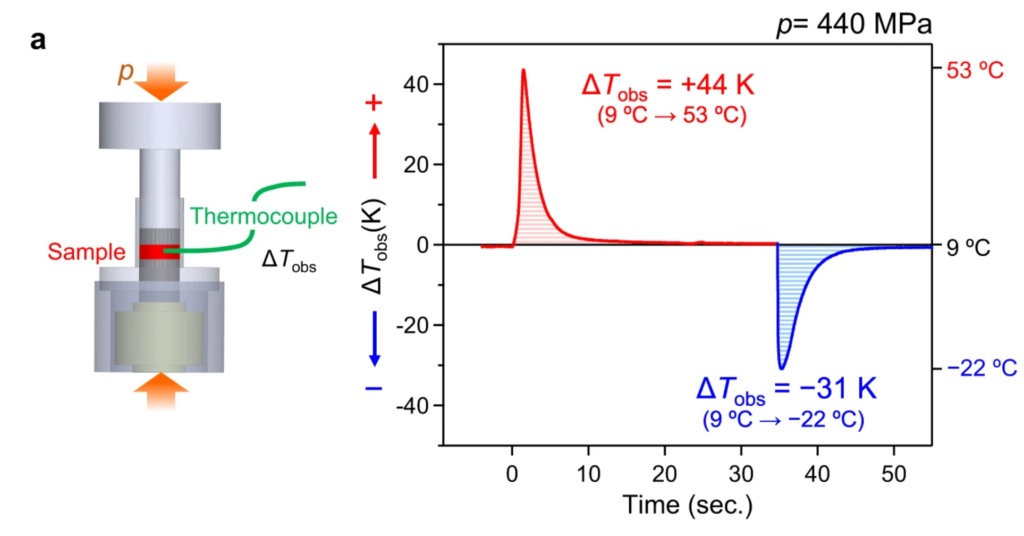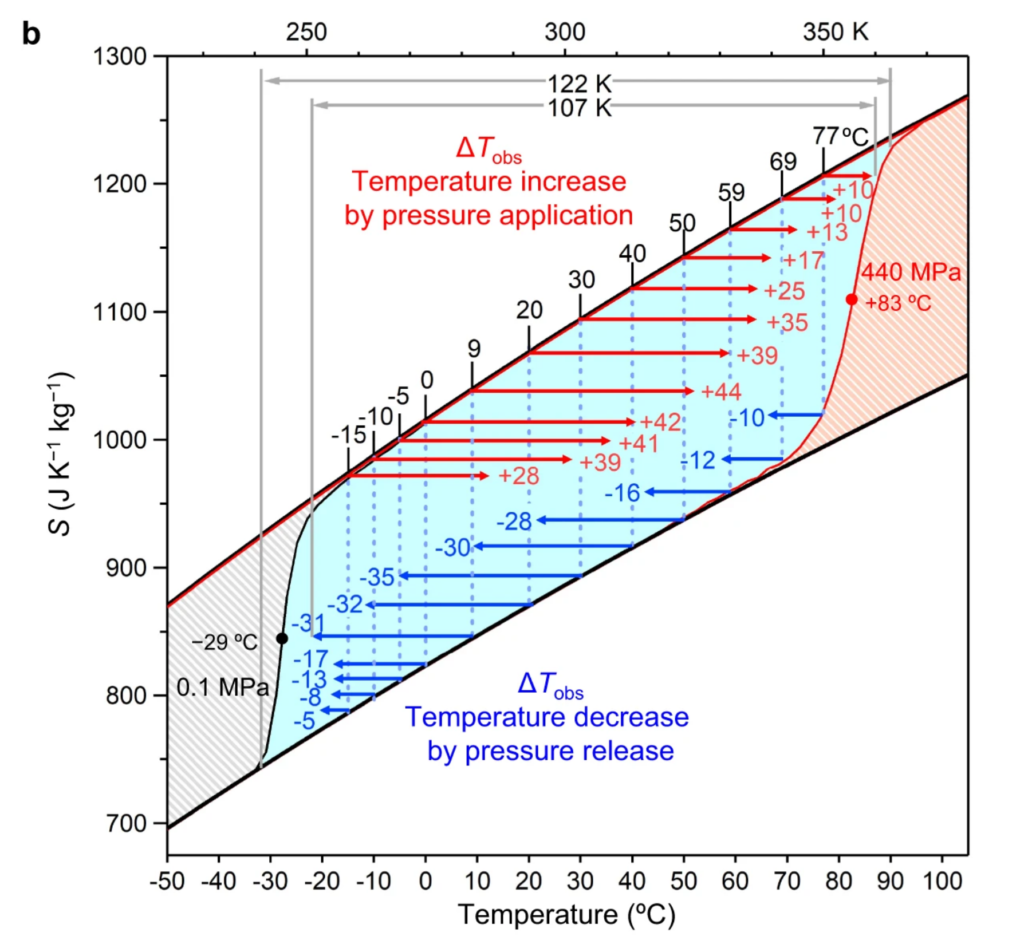More solid refrigerant developments
- PostedPublished 17 January 2024
A pioneering research study led by Shin-ichi Ohkoshi from the University of Tokyo, in collaboration with Tsukuba and Osaka Universities, Aisin Corporation, and Molsis Inc., has resulted in the creation of an inorganic solid refrigerant claimed to deliver the world’s highest cooling performance.

Solid refrigerants are being explored as possible next-generation cooling technologies due to their ability to undergo a caloric effect, meaning they can change temperature when subjected to external stimuli.
The researchers focused specifically on the barocaloric effect, which refers to the phenomenon where applying or releasing pressure to certain materials can cause a temperature change in the system.
Their findings, published scientific journal Nature Communications, describe the remarkable potential of a solid compound known as RbMnFeCo Prussian Blue.

This compound is said to have achieved the highest reversible adiabatic temperature change ever recorded, occurring when pressure changes without any heat entering or leaving the system.
This exceptional performance positions it as an incredibly efficient and eco-friendly refrigerant material with the capacity to revolutionise the cooling industry while effectively addressing environmental concerns about the release of CFC, HCFC and HFC refrigerants to atmosphere.
Through their experiments, the researchers observed that by strategically adjusting the cobalt ions in the RbMnFeCo Prussian Blue compound, they were able to stimulate extraordinary temperature changes. At a pressure of 560MPa, equivalent to about 5500 times the standard atmospheric pressure, the compound achieved a significant temperature drop from 88°C to 3°C.


Even at a lower pressure of 90MPa, the barocaloric effect still resulted in a temperature change of 21°C. These substantial temperature shifts, occurring around room temperature, hold immense potential for practical applications.
The rubidium cyano cross-linked manganese-iron-cobalt compound, known as RbMnFeCo Prussian Blue, was synthesised using a specific procedure involving the reaction of manganese chloride and rubidium chloride with potassium hexacyanoferrate, potassium hexacyanocobaltate, and rubidium chloride. The resulting precipitate was then filtered, dried, and obtained as a powder sample.

One of the most promising aspects of the RbMnFeCo Prussian Blue compound is its robustness. The material maintained its efficiency even after undergoing more than a hundred cycles of pressure application and release, demonstrating its long-term performance and reliability.
Additionally, the compound exhibited high heat transfer abilities and a wide temperature range around room temperature, particularly at low pressures, making it an ideal candidate for solid-based air conditioning and food storage technology where maintaining a specific temperature range is crucial.
As the demand for cooling continues to rise with global temperatures, and with 20% of the world’s generated power already dedicated to this purpose, finding alternative sustainable solutions is becoming increasingly relevant.
- CategoriesIn SightGlass
- Tagsrefrigerant, SightGlass News Issue 32, solid state cooling





